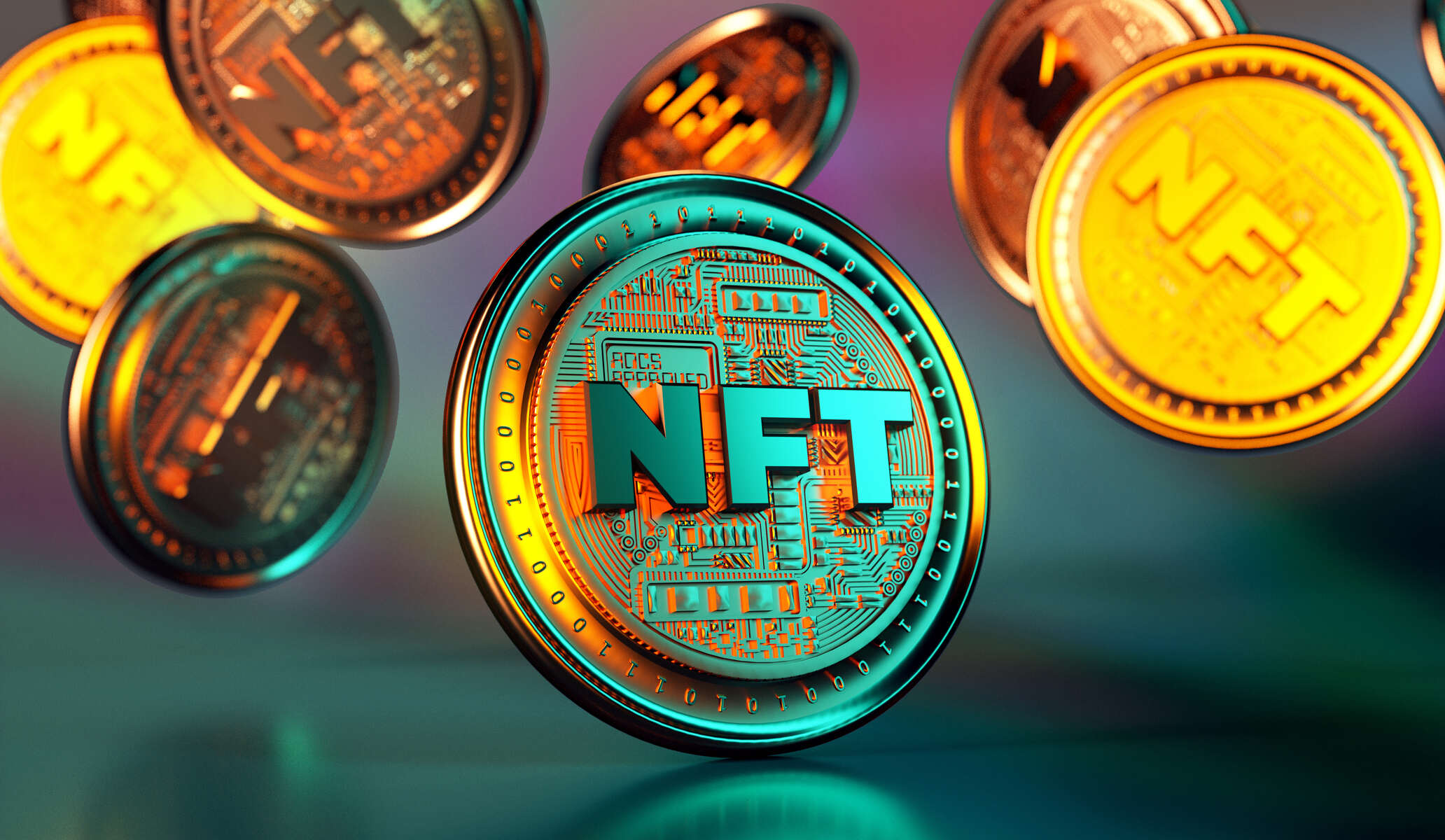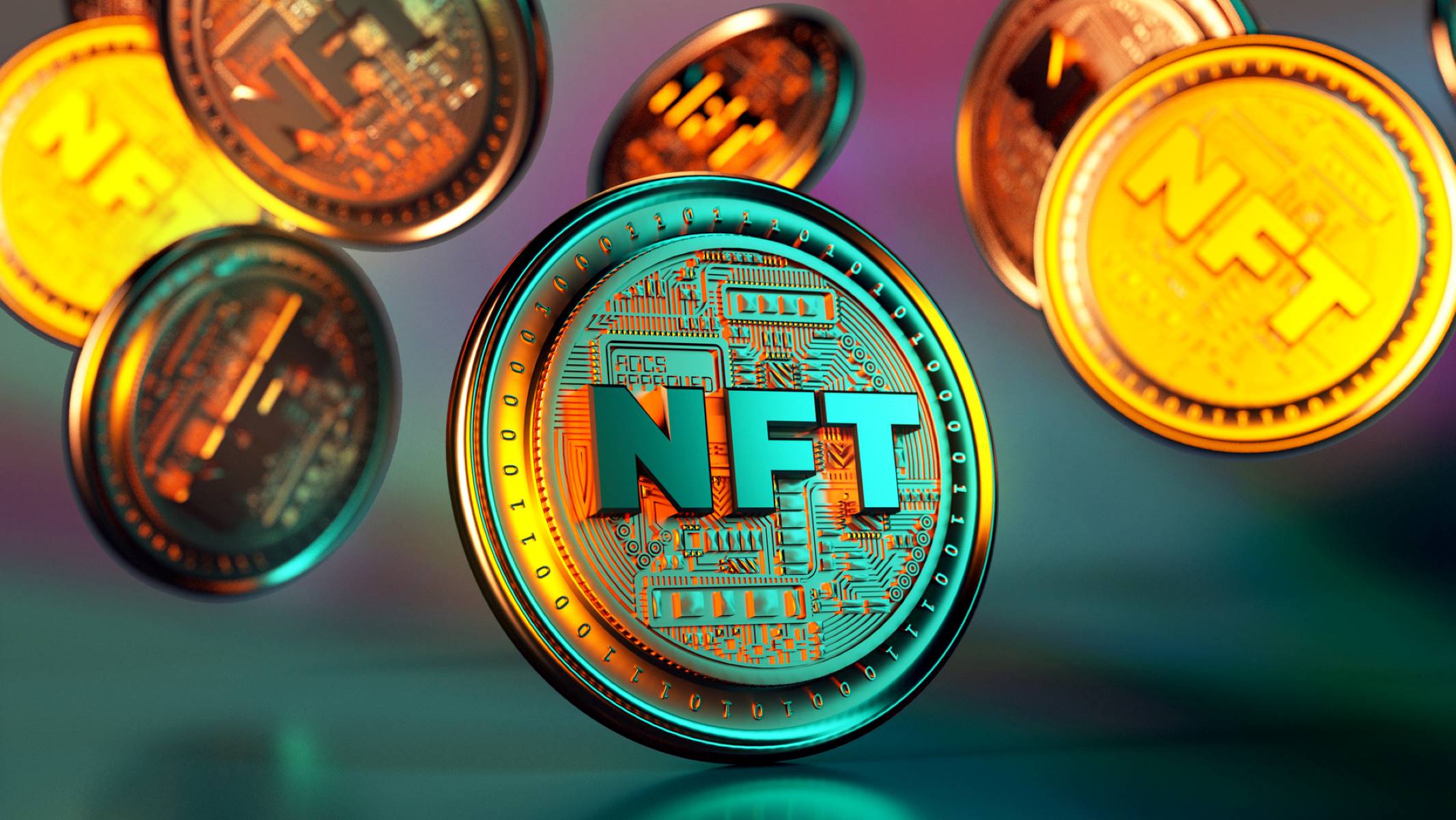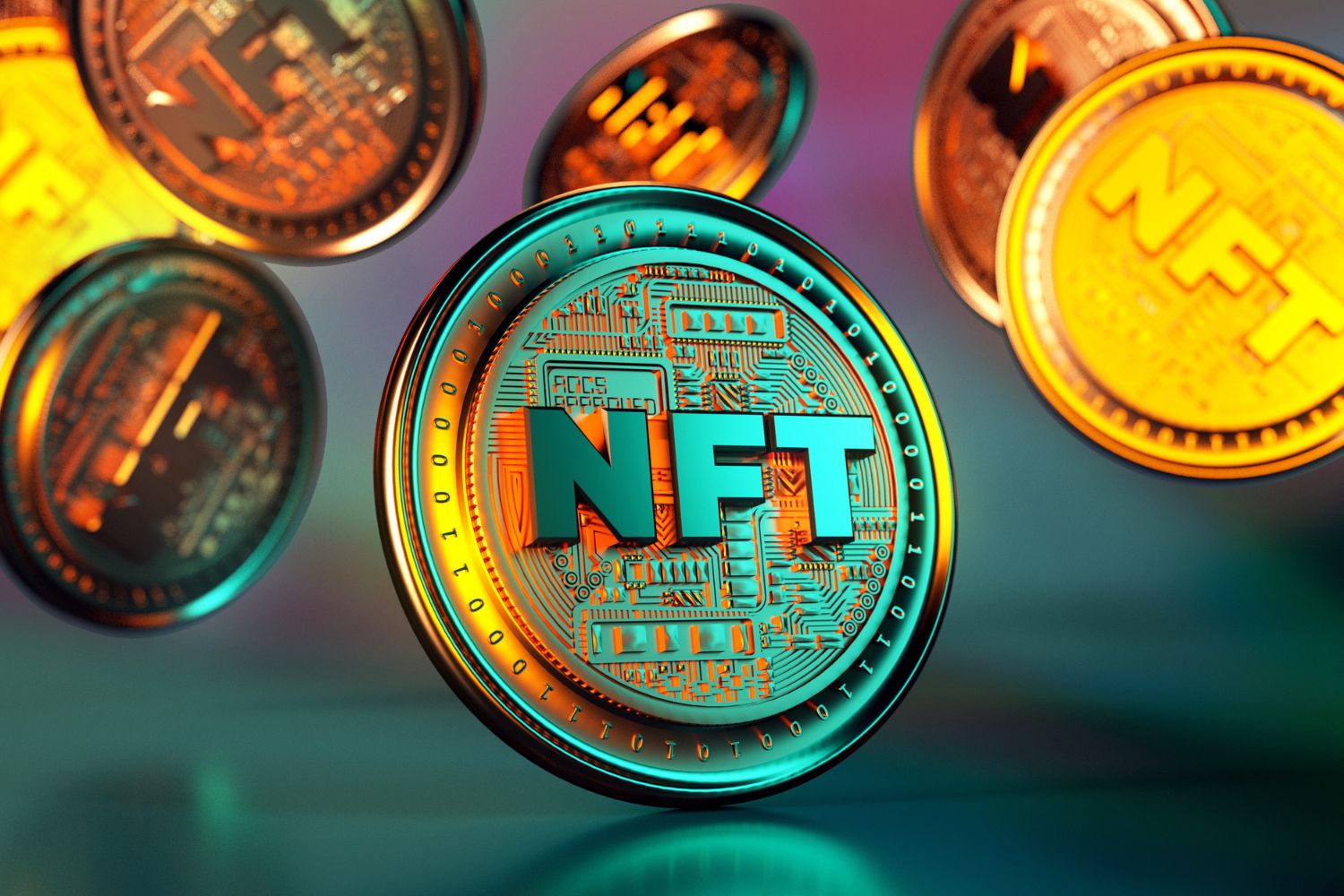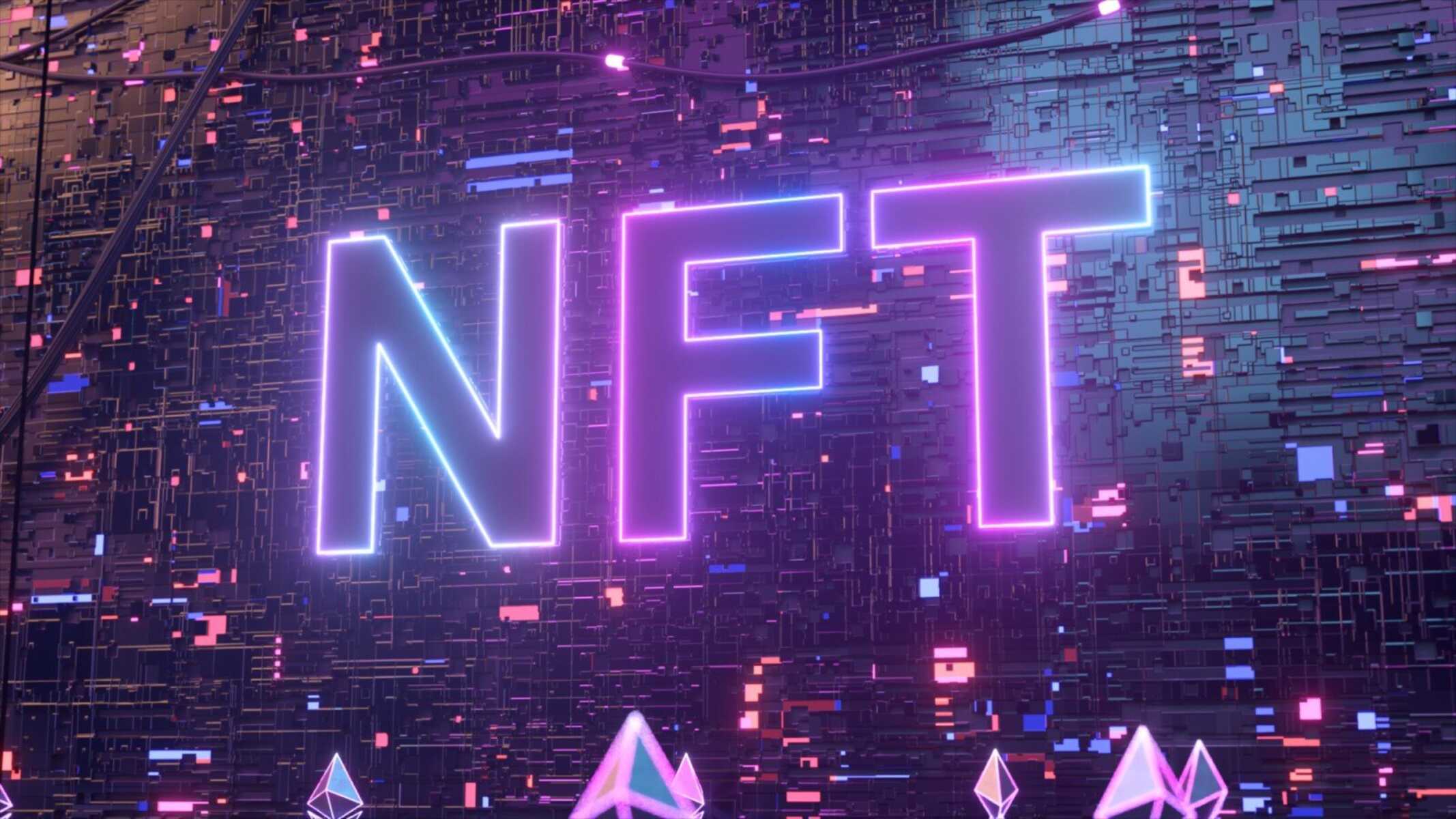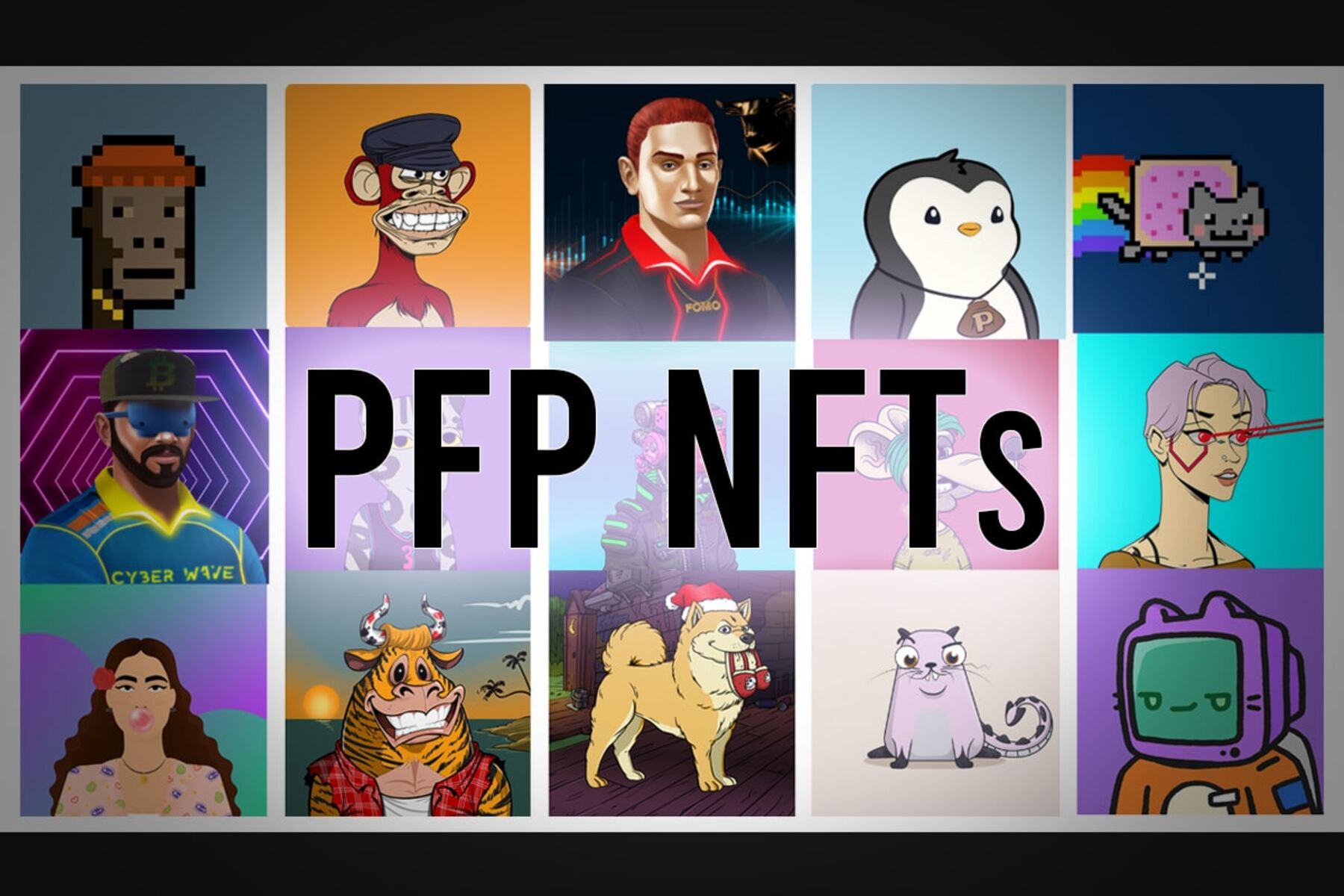Introduction
Welcome to the world of Non-Fungible Tokens (NFTs), where the digital landscape intersects with the world of art, collectibles, and technology. NFTs have taken the market by storm, offering a unique opportunity for investors to own and trade digital assets with a certificate of authenticity and provenance secured through blockchain technology.
NFTs have gained significant attention in recent years, with high-profile sales and celebrity endorsements propelling them into the mainstream. From digital artwork and music to virtual real estate and in-game items, NFTs have emerged as a new and exciting asset class, attracting both seasoned investors and newcomers seeking to capitalize on this burgeoning market.
This article serves as a comprehensive guide for those looking to invest in NFTs. Whether you’re an experienced crypto investor or someone dipping their toes into the world of digital assets for the first time, we’ll cover the basics, provide tips for getting started, and explore strategies to maximize your investments.
Before diving into the specifics, it’s important to note that investing in NFTs, like any other investment, carries risks. It’s vital to conduct thorough research, exercise caution, and make informed decisions. The NFT market is dynamic and rapidly evolving, so staying up-to-date with the latest trends and developments is crucial for success.
Now, let’s embark on this exciting journey into the world of NFT investing and discover how you can potentially profit from this new frontier of digital ownership.
What are NFTs?
In the realm of digital assets, Non-Fungible Tokens (NFTs) have revolutionized the concept of ownership. Unlike cryptocurrencies like Bitcoin or Ethereum, which are fungible and can be exchanged on a one-to-one basis, NFTs are unique and indivisible digital tokens that represent ownership of a specific item or piece of content.
Think of traditional physical assets like artwork or collectibles – each one is unique and holds value in its own right. NFTs work in a similar way, but instead of being physical, they are digital assets that exist on blockchain networks, typically on the Ethereum blockchain.
NFTs can be anything from virtual artwork, videos, music, and virtual real estate to in-game assets and even tweets. They allow creators to tokenize their work, establishing verifiable ownership and enabling the buying, selling, and trading of these digital assets on various online marketplaces.
One key characteristic of NFTs is the concept of provenance and authenticity. Each NFT contains metadata that records information about its creation, ownership history, and other relevant details. This transparency and immutability provided by blockchain technology ensure that the ownership of an NFT can be verified, preventing fraud or unauthorized duplication.
Moreover, NFTs allow creators to earn royalties from subsequent sales of their work. Whenever an NFT is resold on a marketplace, the original creator is entitled to a percentage of the sale, which is automatically distributed through smart contracts.
While NFTs have gained significant attention in the art world, they have expanded beyond that to other industries, including music, gaming, and sports. Musicians can release exclusive albums or singles as NFTs, gamers can trade rare in-game items, and sports enthusiasts can own unique moments from their favorite games or athletes.
Overall, NFTs have reimagined the way we perceive and interact with digital assets. They have provided a new avenue for creators to monetize their work, while also offering investors the opportunity to own unique and valuable digital items.
The Basics of Investing in NFT Crypto
Investing in NFTs can be an exciting and potentially profitable venture. However, it’s essential to understand the basics before diving in. Here are some key factors to consider when starting your journey into NFT crypto investing:
Educate Yourself: Begin by familiarizing yourself with the world of cryptocurrencies and blockchain technology. Understand how NFTs work, their underlying technology, and the various platforms and marketplaces where they are traded. There are plenty of resources available, including articles, forums, and video tutorials, to help you gain the necessary knowledge.
Set Financial Goals: Before investing, determine your financial objectives. Are you looking for short-term gains or long-term investment opportunities? Assess your risk tolerance and decide on the amount of capital you’re willing to allocate to NFT investing.
Choose the Right Wallet: NFTs are stored in digital wallets that interact with blockchain networks. Select a reliable and user-friendly wallet that supports NFTs, such as MetaMask or Trust Wallet. Ensure that your wallet is secure and that you have control over your private keys.
Research NFT Projects: Thoroughly researching NFT projects is crucial to making informed investment decisions. Evaluate the credibility and reputation of the project, the team behind it, and the demand for its NFTs. Consider factors such as artwork quality, uniqueness, utility, and potential for future growth.
Evaluate NFT Marketplace: Look for reputable NFT marketplaces to buy and sell NFTs. These platforms act as intermediaries, connecting buyers and sellers. Consider factors such as user interface, transaction fees, liquidity, and the overall reputation of the marketplace. Examples of popular NFT marketplaces include OpenSea, Rarible, and NBA Top Shot.
Consider NFT Valuation: Valuing NFTs can be challenging due to their uniqueness. Factors that affect the value include the artist’s reputation, scarcity, historical sales data, and the overall demand for the NFT. Analyze the market trends and consult experts or NFT appraisal services if needed.
Stay Informed: The NFT market is constantly evolving, with new projects and trends emerging regularly. Stay up-to-date with the latest news, industry developments, and changes in market sentiment. Follow reputable sources, join NFT communities, and engage in discussions to gather insights and potential investment opportunities.
Manage Risks: Like any investment, NFTs carry risks. Prices can be volatile, and there is always the possibility of scams or fraudulent activities. Diversify your portfolio, investing in a mix of established projects and emerging artists or creators. Consider setting stop-loss orders to protect against significant price drops.
By understanding the basics of investing in NFT crypto and taking a proactive and informed approach, you can enhance your chances of capitalizing on the exciting and rapidly growing market of NFTs.
Setting Up a Wallet
Setting up a digital wallet is a crucial step in the process of investing in NFTs. A wallet serves as a secure storage space for your NFTs and allows you to interact with blockchain networks. Here are the key steps to set up a wallet:
Choose a Wallet: There are various wallet options available, each with its own features and interfaces. One popular choice is MetaMask, which is a browser extension wallet that supports Ethereum and most NFT marketplaces. Other options include Trust Wallet, Coinbase Wallet, and Rainbow Wallet. Research these options to find the wallet that best suits your needs.
Download and Install: Once you have selected a wallet, visit the official website or extension store to download and install the wallet application. Follow the instructions provided, and make sure to only download from trusted sources to avoid scams or malware.
Create a New Account: After installing the wallet, open the application and click on the option to create a new account. You will be prompted to set a secure password and to write down a recovery phrase. This recovery phrase is crucial for accessing your wallet in case you forget your password or lose access to your device.
Secure your Wallet: Take the necessary steps to secure your wallet. Enable two-factor authentication if available, and consider storing your recovery phrase in a safe and offline location. Avoid sharing your wallet password or recovery phrase with anyone to prevent unauthorized access to your funds.
Connect to the Ethereum Network: Most NFTs are built on the Ethereum blockchain, so you will need to connect your wallet to this network. In your wallet application, look for the network settings or network selection option. Choose the Ethereum Mainnet or the network recommended by the platform you plan to use for NFT transactions.
Add Funds to your Wallet: To purchase NFTs, you will need to have funds in your wallet. Depending on your chosen wallet, there are multiple ways to add funds, such as buying cryptocurrency through an exchange and transferring it to your wallet address. Follow the instructions provided by your wallet to add funds securely.
Backup and Test: It’s essential to back up your wallet and verify that it functions properly. Go to the settings of your wallet application and locate the option to backup or export your wallet. Follow the instructions to create a backup file or record your recovery phrase. If possible, perform a small test transaction to ensure that you can send and receive funds without any issues.
Stay Updated: Keep your wallet application up to date by installing any available updates. Wallet developers often release security patches and new features, so staying updated will help keep your funds secure.
By following these steps, you can set up a wallet and gain access to the world of NFTs. Remember to choose a wallet that suits your needs, take measures to secure it, and stay diligent in protecting your assets.
Choosing the Right NFT Marketplace
When it comes to investing in NFTs, choosing the right marketplace is essential. NFT marketplaces serve as the platforms where buyers and sellers can trade digital assets. With the growing popularity of NFTs, several marketplaces have emerged. Here are some factors to consider when selecting the right NFT marketplace:
Reputation and Trustworthiness: Look for a marketplace with a solid reputation in the NFT community. Check reviews, ratings, and user feedback to ensure that the marketplace has a track record of reliable transactions and fair practices. Consider platforms that have been around for a while and have built a trustworthy brand.
User Interface and Experience: A user-friendly interface simplifies the process of browsing, buying, and selling NFTs. Look for a marketplace that provides intuitive navigation, clear instructions, and an aesthetically pleasing design. A good user experience can make your NFT investment journey more enjoyable and efficient.
Range of Offerings: Assess the selection of NFTs available on the marketplace. Consider the variety of categories, such as artwork, collectibles, music, gaming items, and more. A diverse range of offerings increases your chances of finding NFTs that align with your interests or investment goals.
Transaction Fees: Take note of the transaction fees charged by the marketplace. Different platforms may have varying fee structures, including listing fees, gas fees for blockchain transactions, and commission fees on sales. Balance the costs with the features and services provided by the marketplace.
Liquidity: Liquidity refers to the ability to buy or sell NFTs quickly and at fair prices. Look for a marketplace with high trading volumes and active user participation. Higher liquidity ensures a more vibrant marketplace where you can easily enter or exit your NFT positions.
Community and Support: Consider the community aspect of the marketplace. Look for platforms that foster a strong and engaged community, such as forums, social media presence, and support channels. A supportive community can provide valuable insights, networking opportunities, and assistance in navigating the NFT landscape.
Platform Security: Security is of utmost importance in the NFT space. Ensure that the marketplace takes adequate measures to protect user data, funds, and NFT ownership rights. Look for platforms that utilize secure protocols and implement measures like two-factor authentication and encryption.
Artist and Creator Opportunities: If you are interested in supporting emerging artists or creators, consider marketplaces that focus on showcasing and promoting their work. Some platforms offer special features like artist royalties, collaboration opportunities, and curated collections to nurture budding talent.
Platform Policies and Terms: Read and understand the platform’s policy regarding fees, content standards, intellectual property rights, and dispute resolution. Familiarize yourself with the terms and conditions to ensure that they align with your expectations and protect your rights as an NFT investor.
By considering these factors, you can select the right NFT marketplace that aligns with your investment preferences, offers a secure trading environment, and provides access to a diverse range of NFT opportunities.
Researching and Evaluating NFT Projects
Researching and evaluating NFT projects is a crucial step in making informed investment decisions. With the vast array of NFTs available, it’s essential to understand the project, assess its potential, and evaluate the risks involved. Here are some key factors to consider when researching and evaluating NFT projects:
Project Overview: Start by understanding the project’s core concept and goals. Look for a clear and well-defined value proposition that sets the project apart. Evaluate the project’s vision, mission, and its potential impact on the NFT space or the industry it relates to.
Team and Expertise: Assess the team behind the NFT project. Research their experience, credentials, and track record in the relevant field. Look for a diverse team with a strong combination of technical, creative, and business expertise. The team’s reputation and previous successes can provide confidence in the project’s execution capabilities.
Artwork or Content Quality: If the NFT project involves artwork, assess the quality and uniqueness of the creations. Look for skilled and established artists or creators associated with the project. Analyze the aesthetic appeal, technical skill, and originality of the artwork. For non-art NFTs, evaluate the content’s relevance, creativity, and potential market appeal.
Utility and Functionality: Consider the utility and functionality of the NFTs within the project ecosystem. Look for NFTs that serve a purpose beyond mere ownership, such as governance rights, access to exclusive content, or utility in a game or virtual world. Assess the scalability and potential for wider adoption of the project’s NFTs.
Partnerships and Collaborations: Research the project’s partnerships and collaborations with well-known brands, established platforms, or influential individuals. Strong partnerships can help drive adoption, expand the project’s reach, and provide additional credibility.
Market Demand and Trends: Analyze the current market demand for similar NFTs and assess the project’s alignment with the latest industry trends. Consider factors such as market size, target audience, and market dynamics. Look for unique selling points that can make the project stand out in a crowded market.
Community Engagement: Evaluate the level of community engagement around the NFT project. Look for active and supportive communities on social media platforms, forums, and dedicated community channels. Engage with the community to gather insights, gauge sentiment, and understand the level of enthusiasm surrounding the project.
Roadmap and Development Progress: Review the project’s roadmap to understand its milestones, timelines, and planned updates. Assess the project’s development progress, taking note of any significant achievements or delays. A well-defined roadmap and consistent development progress indicate a committed team with a clear vision for the project’s growth.
Audits and Security: Look for audits or security assessments conducted by reputable third-party firms. A thorough security review provides assurance that the project has implemented robust measures to protect its users and the underlying technology from potential vulnerabilities or hacks.
Legal Considerations: Understand the legal implications of investing in the NFT project. Research the project’s compliance with relevant regulations, intellectual property rights, and any potential legal risks associated with the NFTs or the platform.
Remember that thorough research, analysis, and due diligence are critical when evaluating NFT projects. A comprehensive understanding of the project will help you make informed investment decisions and increase the likelihood of success in the dynamic and evolving NFT market.
Understanding NFT Valuation
Valuing Non-Fungible Tokens (NFTs) can be a complex task due to their unique nature and the evolving nature of the market. Unlike traditional assets with established valuation models, NFTs don’t have standardized metrics. However, several key factors can help in understanding NFT valuation:
Artist Reputation: The reputation and recognition of the artist behind an NFT can significantly impact its value. Established artists or creators with a track record of successful sales and a strong following often command higher prices for their NFTs. Factors such as artistic style, innovation, and previous accolades can contribute to an artist’s reputation.
Scarcity and Rarity: The scarcity or rarity of an NFT can drive up its value. Limited edition or one-of-a-kind NFTs tend to be more highly valued, as they offer exclusivity and uniqueness. Assess the total supply and edition size of an NFT project to determine its scarcity, as well as the demand-supply dynamics within the market.
Historical Sales Data: Analyzing the historical sales data of similar NFTs can provide insights into their market value. Look for comparable NFTs in terms of artist reputation, scarcity, and market demand. Examine the prices at which similar NFTs have been sold to understand the market trends and potential value of a particular NFT.
Utility and Functionality: The utility or functionality of an NFT can impact its value. NFTs that provide exclusive access to content, membership in clubs or communities, or governance rights within a project may command higher prices. Assess the practical utility of an NFT to determine its potential value in the marketplace.
Market Demand and Trend Analysis: Understanding the current market demand for specific NFT categories or themes is crucial for valuation. Analyze the latest trends and hot topics in the NFT space to identify areas with high demand. Consider factors such as cultural relevance, social media buzz, and celebrity endorsements that can contribute to increased market demand for certain NFTs.
Quality and Aesthetics: The quality and aesthetics of the artwork or content associated with an NFT can influence its value. Assess factors such as the technical skill, artistic style, and emotional appeal of the NFT. Unique and visually stunning creations often attract more attention and higher valuations.
Secondary Market Performance: Monitoring the performance of NFTs in the secondary market can provide insights into their value. Look for trends in the resale prices of similar NFTs to understand their investment potential. Consider factors such as liquidity, trading volume, and the overall sentiment in the secondary market.
Overall Market Sentiment: The sentiment within the NFT market can have an impact on the valuation of individual NFTs. Positive developments, industry endorsements, or significant events within the NFT space can generate increased interest and demand, driving up the value of NFTs across the board. Stay informed and gauge the broader market sentiment before making valuation assessments.
Valuing NFTs requires a combination of objective analysis and subjective judgment. While there is no standard formula for NFT valuation, considering the factors mentioned above can help you form a more informed opinion on the potential worth of an NFT within the dynamic and evolving NFT market.
Strategies for Investing in NFT Crypto
Investing in NFT crypto can be an exciting and potentially lucrative endeavor. However, it’s important to approach NFT investments with a well-thought-out strategy that aligns with your goals and risk tolerance. Here are some strategies to consider when investing in NFT crypto:
Diversification: Diversification is a fundamental investment strategy that applies to NFTs as well. Spread your investments across different NFT projects, artists, and categories. By diversifying your portfolio, you can mitigate risks associated with any single asset or project and increase your chances of participating in successful projects.
Research and Due Diligence: Thoroughly research and evaluate each NFT project before making an investment. Consider factors such as the project’s concept, team, artwork quality, market demand, and community engagement. Conduct due diligence to ensure the project is legitimate, has a strong roadmap, and aligns with your investment goals.
Timing the Market: Timing is crucial in any investment. Keep an eye on market trends, upcoming releases, and significant events within the NFT space. Timing your purchases strategically can help you take advantage of market dips or capitalize on emerging trends and high-demand NFTs.
Long-term Holding: Consider a long-term holding strategy for certain NFTs that you believe have strong potential for growth. Holding onto NFTs for an extended period allows you to benefit from potential appreciation and increasing demand over time.
Flipping NFTs: Flipping involves buying NFTs at a lower price and selling them quickly at a higher price. This strategy requires careful analysis of market trends, limited-edition drops, and identifying undervalued NFTs. It can be lucrative, but the market can be volatile, so it’s important to stay informed and make timely decisions.
Participate in Early Drops: Early drops or presales of NFT projects can provide opportunities to acquire NFTs at a lower price before they are available to the general public. Keeping an eye on project announcements and participating in early drops can potentially yield desirable NFTs with investment potential.
Follow Influencers and Curators: Stay connected with NFT influencers, curators, and expert voices in the industry. They often provide insights, analysis, and recommendations on promising NFT projects. Engage with the NFT community and participate in forums or social media discussions to gather valuable information.
Set Budgets and Risk Appetite: Determine your investment budget dedicated to NFTs and define your risk tolerance. Set a budget that you can afford to lose without impacting your financial well-being. Be aware that the NFT market can be highly volatile, and investments should align with your risk appetite.
Monitor and Re-evaluate: Continuously monitor your NFT investments, market trends, and project developments. Stay updated with news, community sentiment, and changes in the broader cryptocurrency and NFT ecosystem. Re-evaluate your portfolio periodically and make adjustments as needed.
Consider Professional Advice: If you are unsure or lack experience in NFT investing, consider seeking professional advice from experts in the field. NFT consultants or investment advisors can provide expertise and guidance based on their knowledge and experience in the NFT market.
Remember, investing in NFT crypto comes with risks, and no strategy guarantees success. It’s important to stay informed, keep learning, and adapt your strategies as the NFT landscape evolves.
Diversification and Risk Management
Diversification and risk management are critical aspects of any investment strategy, and they play a crucial role when investing in NFTs. Here are some key considerations for diversification and risk management in the realm of NFT crypto:
Spread Your Investments: Diversify your NFT investments across different projects, artists, and categories. By spreading your investments, you reduce the risk of any single asset impacting your entire portfolio. Invest in a mix of established projects with proven track records and emerging projects with high growth potential.
Consider Different NFT Categories: Explore various NFT categories such as artwork, collectibles, music, gaming, or virtual real estate. Each category has its own dynamics, trends, and market fluctuations. By investing in different categories, you can tap into diverse markets and potentially benefit from the growth in multiple niches.
Allocate Your Capital Wisely: Allocate your investment capital in a balanced and strategic manner. Determine the percentage of your portfolio you are willing to allocate to NFTs and distribute it among different assets. Avoid overexposure to any single NFT or project to mitigate potential losses.
Evaluate Risk-Reward Ratio: Assess the risk-reward ratio of each NFT investment. Consider the potential upside and downside of an investment, weighing the potential returns against the level of risk. High-risk investments may offer greater rewards, but they also come with increased volatility and potential for losses.
Set Stop-Loss Orders: Implement stop-loss orders to manage potential losses and protect your investments. A stop-loss order automatically sells an NFT if its price reaches a predetermined level. This helps limit losses by exiting a position at a predefined price, mitigating the potential impact of market downturns.
Stay Informed: Continuously stay informed about the NFT market, trends, and news. Monitor the performance of your NFT investments, track market sentiment, and follow updates from projects you have invested in. By staying informed, you can make timely decisions and minimize the potential for unexpected risks.
Manage Gas Fees and Transaction Costs: Gas fees and transaction costs on blockchain networks can significantly impact your returns. Evaluate the cost of transactions on different platforms and consider these costs when making investment decisions. Optimize your investment strategy by choosing platforms with lower transaction fees, or wait for periods of lower network congestion to minimize costs.
Regularly Reassess and Adjust: Regularly reassess and adjust your NFT portfolio based on market conditions, project developments, and your own risk tolerance. Periodically evaluate the performance of your investments, considering the potential for rebalancing or reallocating capital to align with your investment goals.
Understand Regulatory and Legal Considerations: Stay informed about the regulatory and legal landscape surrounding NFTs. Understand the implications of intellectual property rights, tax obligations, and any legal risks associated with the NFTs you own. Ensure compliance with relevant regulations to minimize legal complications.
Remember, despite careful diversification and risk management strategies, NFT investments carry inherent risks. It’s crucial to conduct thorough research and stay informed to make informed decisions. Be prepared for potential market fluctuations, and evaluate the risk and reward before making any investment in NFT crypto.
Staying Informed and Updated
In the fast-paced world of NFT crypto investing, staying informed and updated is crucial to making informed decisions and maximizing your investment potential. Here are some strategies to stay informed and keep up with the latest developments in the NFT space:
Follow Industry News and Publications: Stay connected with trusted news sources, industry publications, and NFT-focused websites. Subscribe to newsletters, follow relevant social media accounts, and join online communities dedicated to NFTs. These sources often provide insights, analysis, and updates on market trends, new projects, and emerging opportunities.
Engage in NFT Communities: Participate in NFT communities to network with fellow investors, collectors, and enthusiasts. Engage in conversations, ask questions, and share knowledge. Online platforms, forums, and social media groups dedicated to NFTs provide valuable insights, discussions, and real-time updates.
Connect with Influencers and Curators: Follow NFT influencers, curators, and thought leaders in the industry. Influencers often share their perspectives, analysis, and recommendations on NFT projects and trends. By connecting with experienced individuals, you can gain valuable insights and stay up-to-date on the latest developments.
Monitor NFT Marketplaces: Regularly review NFT marketplaces such as OpenSea, Rarible, and SuperRare. Browse through the offerings, explore different categories, and observe the trading volumes and prices. Tracking the marketplace provides a pulse on market trends, popular NFT collections, and potential investment opportunities.
Attend NFT Events and Conferences: Attend NFT events and conferences, either in-person or virtually. These events offer opportunities to network, learn from experts, and gain deeper insights into the industry. Panels, workshops, and keynote speeches provide valuable educational and networking experiences.
Research Influential Artists and Creators: Follow influential artists and creators in the NFT space. Explore their work, track their releases, and understand their impact on the industry. By monitoring their activities, you can gain insights into emerging trends and potentially uncover investment opportunities.
Track NFT Project Updates: Stay updated with the progress of NFT projects you have invested in or are interested in. Follow the official social media channels and subscribe to project newsletters to receive updates on developments, new releases, and community activities. Regularly review the project’s roadmap to gauge progress and any changes in direction.
Stay Current with Regulatory Landscape: Keep track of regulatory and legal developments surrounding NFTs. The regulatory landscape is evolving, and staying informed about legal considerations, intellectual property rights, and tax implications is crucial. Consult legal professionals if needed to ensure compliance and mitigate legal risks.
Continuously Learn and Adapt: The NFT space is dynamic and constantly evolving. Dedicate time to continuously learning about blockchain technology, NFT trends, and investment strategies. Stay open-minded, adapt to new information, and refine your investment approach based on changing market dynamics.
Utilize Analytical Tools: Explore analytical tools and platforms that provide data on NFT sales, market trends, and project performance. These tools can help you make informed decisions by analyzing historical data, identifying patterns, and evaluating the sentiment in the NFT market.
By actively staying informed and updated, you can develop a deeper understanding of the NFT market, identify emerging trends, and make well-informed investment decisions in the fast-paced world of NFT crypto investing.
Conclusion
Investing in NFT crypto provides a unique opportunity to participate in the exciting world of digital ownership and the growing NFT market. By understanding the basics of NFTs, setting up a wallet, choosing the right marketplace, researching projects, valuing NFTs, and implementing effective investment strategies, you can navigate this fast-evolving landscape with confidence.
It’s important to approach NFT investments with a well-thought-out strategy, focusing on diversification and risk management. By diversifying your portfolio across different NFT projects, categories, and artists, you can mitigate risks and increase your chances of discovering successful investments. Implementing risk management techniques such as setting stop-loss orders and staying informed about market trends and project updates further enhances your investment approach.
Staying informed and updated is paramount in the ever-changing world of NFT crypto. Engaging with NFT communities, following influencers, tracking marketplaces, attending events, and continuously learning about the industry’s nuances will help you stay ahead and make informed investment decisions.
Remember, investing in NFTs carries risks. Markets can be volatile, project success is not guaranteed, and legal considerations must be addressed. Conduct thorough research, exercise caution, and consult professionals if needed to minimize risks and ensure compliance with regulations.
With the right knowledge, strategy, and a keen eye on market trends, investing in NFT crypto can provide opportunities for financial growth as well as participation in the exciting world of digital art, collectibles, and other unique assets. Embrace the possibilities, adapt to the evolving landscape, and enjoy the journey as you explore the vast opportunities that NFTs offer.









